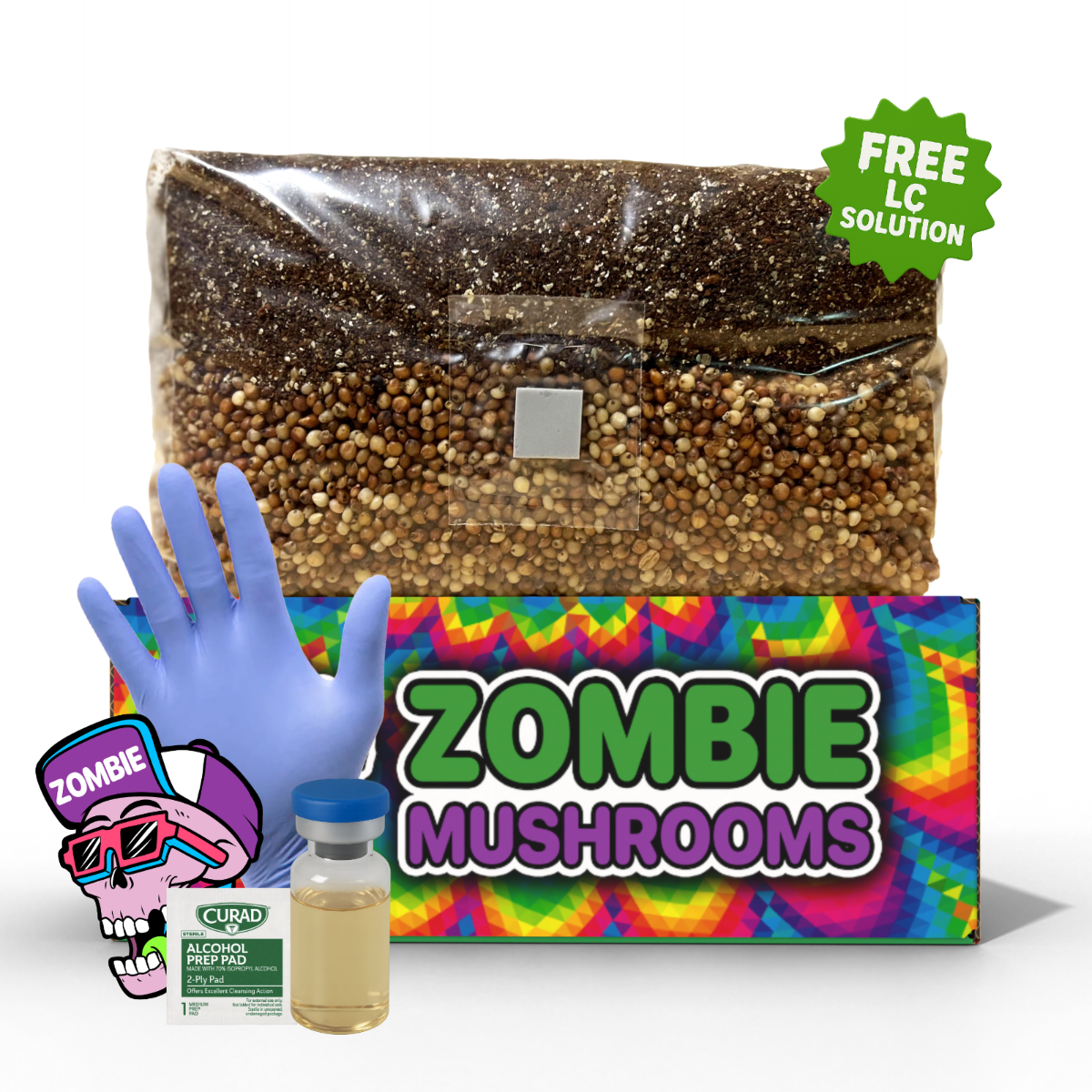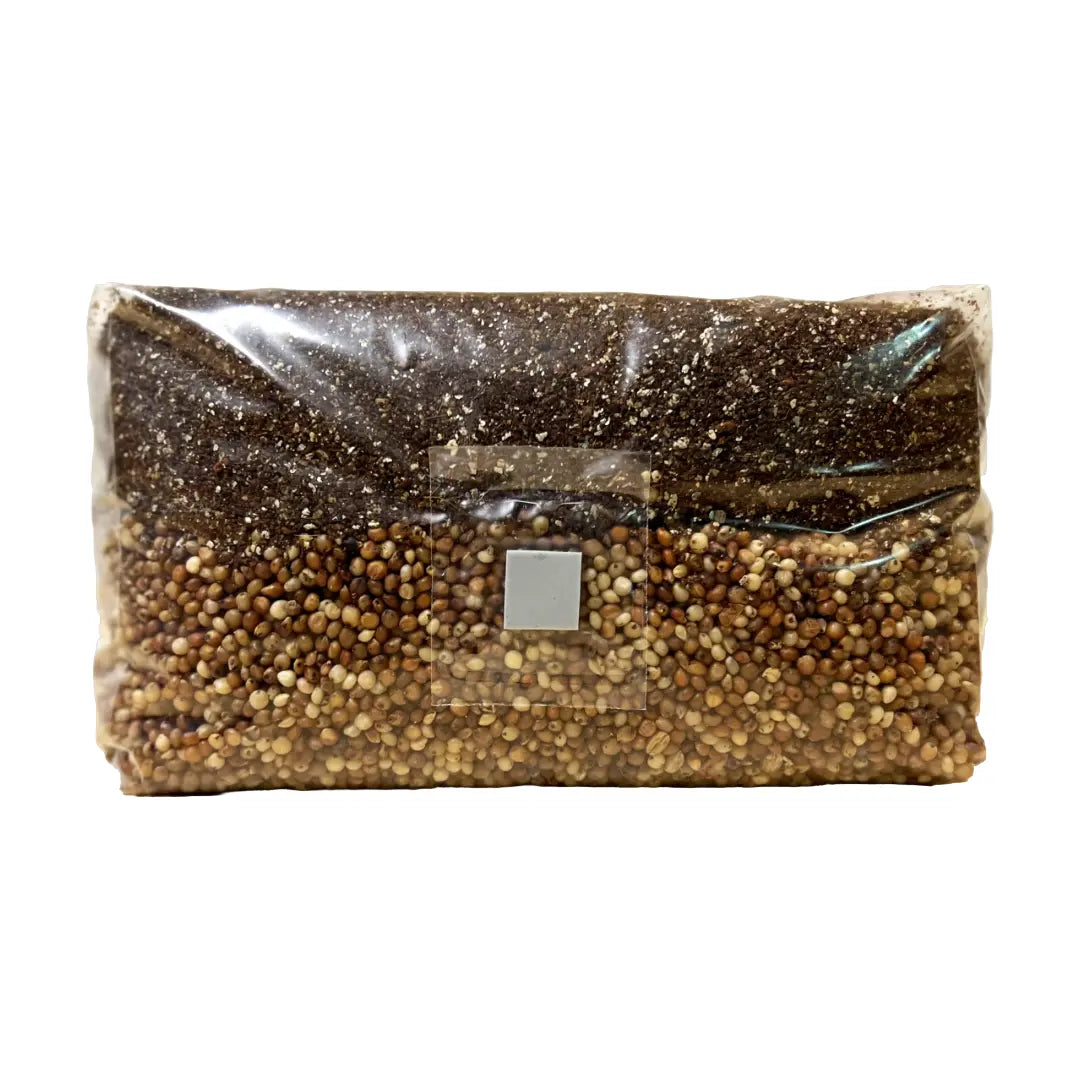Last Updated: April 27, 2025
- Using mushroom agar is really important if you want to separate mycelium, keep bad stuff out, and make more of your clean cultures.
- The best agar for mushrooms changes depending on the type of mushroom. MEA works well for most, but some kinds grow better on special mixes.
- Keeping things clean is super important when you're working with mycology agar plates.
- Healthy mycelium on agar looks a certain way, which tells you it's strong and pure.
- Keeping cultures on slants is a great way to store them for a long time so you don't lose good types.
- Knowing about agar mycology is a basic skill you need for growing more mushrooms later on.
The world of growing mushrooms has lots of interesting ways of doing things, but working with mushroom agar is one of the most helpful. If you're just starting out and want to do more than just use kits, or if you've been growing for a while and want to get better, understanding agar mycology will help you get great results. This jelly-like stuff made from seaweed is what you build everything on if you want to grow lots of mushrooms successfully. Our pre-made agar cups make it simple for beginners to dive into agar work without the mess or cost of traditional petri dishes.
In this guide, we'll look at everything from picking the best agar for mushrooms to getting good at moving cultures and storing them for a long time. You'll learn how mycology agar plates let you see, pick, and grow only the strongest mycelium while leaving any bad stuff behind. By the end, you'll know how to use agar mycology like the pros, which will really help you grow more mushrooms and make them better.
Why Agar Mycology Is Important for Mushroom Growers

Growing mushrooms on agar is a key part of growing more advanced mushrooms. This jelly made from red seaweed is the perfect place to grow healthy mycelium on agar before you put it on bigger things. If you get good at agar mycology, you can:
-
Separate clean mycelium and get rid of contamination.
-
Watch how it grows to figure out the best way to grow it.
-
Move clean cultures to other things to make more.
-
Pick and keep the good traits of your mushrooms.
Whether you're new to this or have been doing it for a while, using mycology agar plates gives you a lot of control in the early stages of how your mushrooms grow.
Understanding Mushroom Agar Basics
Agar mycology means using a jelly-like stuff from red algae (mostly Gelidium and Gracilaria types) mixed with food to make a solid place for cultures to grow. This makes a good place to grow healthy mycelium on agar where you can see what's happening.
Here's why mushroom agar is so important for growing mushrooms well:
-
Keeping Clean: Mycology agar plates let you see if there's any bad stuff growing, so you can take only the clean, healthy mycelium on agar and move it.
-
Picking Good Genes: You can see how different things grow right on the mushroom agar, so you can pick the strongest mycelium to grow more.
-
Good Start: Healthy mycelium on agar can be moved to grains or other growing stuff, and it's less likely to get contaminated than if you used spores or liquid cultures right away.

How to Select the Right Agar Media
Different agar mixes are used for different things in agar mycology. The best agar for mushrooms depends on what you want to grow and what kind of mushroom it is.
1. Malt Extract Agar (MEA)
Rich in carbohydrates and minerals; ideal for aggressive species and general usage. Supports vigorous mycelial growth and strain differentiation.
-
Best for: Growing most kinds of mushrooms and separating different types.
-
Good things: It makes the mycelium grow fast and is easy to make.
-
A lot of people think this is the best agar for mushrooms overall.
2. Rye Malt Agar
Combines malt extract with rye ingredients. Great for hardwood lovers like Shiitake and Reishi, which benefit from richer nutrient profiles.
- Best for: Mushrooms that need a lot of food, like Shiitake or Reishi.
- Good things: It helps them grow strong and make a lot of mycelium.
- People who grow mushrooms to sell often like this one because it gives them the most mycelium.
3. Potato Dextrose Agar (PDA)
Often used in lab settings. It grows fast, has mildly acidic pH, which helps suppress bacterial growth; good for experimenting or quickly expanding cultures.
-
Best for: Types of mushrooms that grow fast and for doing research.
-
Good things: It makes them grow quickly and has a slightly acidic pH, which helps keep bacteria away.
-
It's a great choice if you need to move cultures quickly and do big projects.
4. Nutrient Agar
Less rich, lower cost; best for basic strain maintenance, contamination testing, or where fast growth isn’t required.
-
Best for: Separating basic mycelium or studying how bacteria and fungi interact.
-
Good things: It's simple, so it's easier to see if there's contamination.
-
It's not the best for growing mushrooms for a long time because they grow slower.
Tip: Try small test plates with two different media types to see which mycelium growth looks cleanest and strongest before scaling up to grain spawn or substrate.
Best Practices for Agar Work & Culture Preservation
Mycology agar plates give you a clean place to grow healthy mycelium on agar. Whether you buy them already made or make them yourself, it's really important to keep everything sterile.
-
Preparing Your Workspace: Set up a still-air box or laminar flow hood. Disinfect surfaces, wear gloves and mask. Use 70% isopropyl alcohol to wipe down everything before work.
-
Handling Agar Plates Safely: Only open lids partially and at an angle. Work quickly to minimize exposure. Sterilize tools (scalpels, tweezers, inoculation loops) using flame between each use. Keep culture plates upside down during incubation to prevent condensation dripping.
-
Preserving Cultures with Slants: Prepare agar slants by filling test tubes with chosen media, sterilizing, and cooling at an angle. Inoculate with a healthy piece of mycelium. Store slants refrigerated at ~4-10°C for long-term culture retention (1-3 years).
-
Labeling & Monitoring: Always date, label strain/media type, and keep records of growth rate. Remove any cultures showing contamination immediately to protect other cultures.

Transferring Healthy Mycelium on Agar
Once you see healthy mycelium on agar growing, you'll need to move clean parts of it to new plates so it keeps growing clean.
Culture Transfer Process
-
Get your workspace ready with all your tools and fresh mycology agar plates within reach.
-
Pick the best growth by looking for the healthiest, strongest parts of the mycelium. Look for:
-
Rhizomorphic growth (stringy, growing in one direction).
-
Areas that don't have any visible contamination.
-
The edges where the mycelium is actively growing.
-
Cut out a small piece of the agar with the mycelium and move it to a fresh plate:
-
Use a scalpel that you've sterilized with a flame to cut a small wedge.
-
Gently put it in the middle of a new mushroom agar plate.
-
Don't push down too hard so you don't hurt the mycelium.
-
Seal and label the new plate right away so you know what it is.
For healthy mycelium on agar, remember to:
-
Sterilize your tools again every time you move a piece.
-
Keep the plates out of the open air as much as you can.
-
Work carefully and efficiently.
Avoiding Contamination in Agar Mycology
Contamination is the biggest problem when working with agar mycology. Bacteria, mold, and yeast can quickly ruin your mycology agar plates if you're not careful.
Contamination Prevention Strategies
-
Sterilize everything in your workspace:
-
Surfaces, tools, and the air should be as clean as possible.
-
Use 70% isopropyl alcohol a lot.
-
Think about using a still-air box or a laminar flow hood.
-
Use aseptic technique (keeping things sterile):
-
Keep mycology agar plates closed unless you need to open them.
-
Hold the plates so they're not open to the air too much.
-
Use a flame to sterilize your tools often while you're working.
-
Minimize environmental factors:
-
Wear clean gloves, a mask, and freshly washed clothes.
-
Work for short periods of time so you don't expose things to the air for too long.
-
Take any plates that look contaminated away right away.
Long-Term Storage with Culture Slants
Culture slants are a great way to keep healthy mycelium on agar for a long time.
Using Culture Slants for Preservation

Culture slants are test tubes with mushroom agar that:
-
Give the mycelium more surface to grow on.
-
Let you store cultures for a long time (1-3 years).
-
Keep the good traits of your mushroom types.
-
Don't take up much space.
To make and use culture slants:
-
Fill test tubes with the mushroom agar mix you choose.
-
Sterilize them properly in a pressure cooker.
-
Let them cool down at an angle so the agar is slanted.
-
Seal them and store them in the fridge (between 4-10°C).
Essential Tools for Agar Mycology
To work well with mushroom agar, you need some specific tools:
-
Pre-poured sterile agar plates: Important for growing spores and mycelium.
-
Scalpel or inoculation loop: For carefully moving pieces of mycelium.
-
Alcohol lamp or butane torch: For sterilizing tools with a flame.
-
Parafilm or micropore tape: To seal plates and keep contamination out.
-
Labels and markers: To clearly mark your cultures.
Common Mistakes in Mushroom Agar Work
Even experienced growers make these mistakes when working with mushroom agar:
-
Not keeping things sterile enough: Not being careful about cleanliness during the whole process.
-
Not storing things right: Not sealing or refrigerating plates properly.
-
Touching things too much: Opening plates when you don't need to, which lets in contamination.
-
Not labeling well: Losing track of what kind of mushroom is what and when you started it.
For successful agar mycology, keep things organized and clean above all else. How careful you are really affects your results.
FAQ
-
What’s the difference between MEA, PDA, and Nutrient Agar?
MEA is richer and promotes faster, fuller mycelial growth. PDA is used for fast growth and lab work; nutrient agar is simpler and cost-effective for maintenance or testing. -
Why are pre-made agar cups helpful for beginners?
They eliminate media prep and sterilization steps, reducing error and contamination. Better for learning agar work before scaling up. -
How do I store agar cultures long term?
Use culture slants stored in test tubes with agar, kept refrigerated (~4-10°C). Properly sealed, these can last 1-3 years. -
How can I tell if a culture is contaminated?
Signs include fuzzy or unusual colors (green, black, reddish), sliminess, off-smells, or growth that deviates from the regular hyphal pattern. -
When should I transfer agar mycelium to grain spawn or substrate?
Once you have a plate with healthy, vigorous growth (clean edges, no contamination, good density), typically within 5-10 days (depending on species/media), that can be used to seed grain spawn or substrate for fruiting.
Next Steps After Mastering Mushroom Agar
Once you have healthy mycelium on agar, you can do a few different things to grow more mushrooms:
-
Use rye berries, millet, wheat, or brown rice.
-
This is the first step to growing mushrooms in bulk.
-
Liquid culture techniques:
-
Grow mycelium in liquid food.
-
This lets you make more starter culture faster.
-
It can make the whole growing process quicker.
-
Species experimentation:
-
Use your agar mycology skills to try growing different kinds of mushrooms.
-
See how different types grow on different mushroom agar mixes.
-
Learn special ways to grow certain mushrooms.
Key Takeaways
Working with mycology agar plates teaches you really important things about keeping contamination out, which helps with every part of growing mushrooms. The skills you learn by separating and keeping healthy mycelium on agar build a base of knowledge that helps you with much more than just this one thing.
Every time you move a culture, every time you separate one, and every time you look closely at what's growing, you learn to see the small differences between healthy growth and problems. This helps you fix things earlier and have more success with all your mushrooms growing.
If you keep practicing and pay attention to the details, you'll get good at making consistently healthy mycelium on agar and you'll be able to grow mushrooms like a professional.



